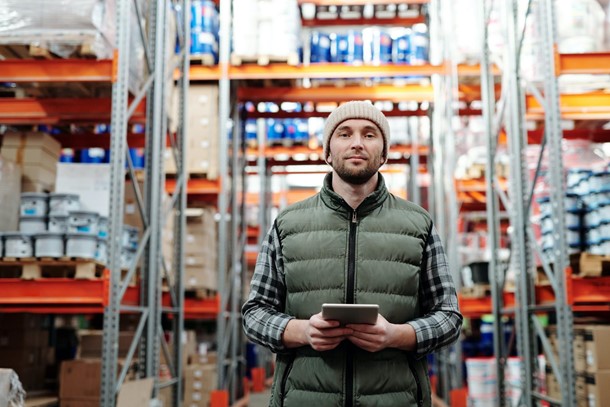Manufacturing Logistics Impacting the Agriculture Industry

Image Source: Pexels
The rapidly changing nature of global trade has a domino effect across industries. COVID-19, for instance, threw all supply and demand predictions out the window, creating a nightmare for food manufacturers, suppliers, and sellers. The results highlighted the needs and the challenges facing logistics in the agriculture industry.
Buyers and markets are changing along with demand. To meet the needs of a global marketplace, agricultural producers have to understand how logistics processes can reshape production, shipping, storage, and more.
Here, we look at the impacts of widespread manufacturing logistics in agriculture and the changes, challenges, and benefits that come with logistical processes.
Manufacturing Logistics and the Agriculture Industry
Explaining how manufacturing logistics affect agricultural processes is best done by showing where these fields overlap.
Logistics management is the process of streamlining the flow of every aspect of agro-goods. For manufacturers, this means ensuring that materials from all your suppliers arrive efficiently while all your product goes out where it is expected to go. The smooth organization of this process is essential for keeping food products from spoiling before they reach their intended destination. With an estimated 11% of the globe facing problems of hunger, stepping up production is necessary to try to meet demand. Logistics makes this increasingly possible.
Logistics management requires keeping an eye on several moving parts. Ensuring that different sectors of the global economy get the food, seeds, and products they need to stay fed is a delicate balancing act. Manufacturing logistics inform agricultural producers — with the help of technology — what amount of food is needed and in what quantities. Then, logistics systems help them track their resources.
The typical agricultural supply chain consists of four definitive points of transaction: from farmer to silo to transformation plants to clients. This means thousands of possible outcomes when managing different suppliers, storage facilities, and customers. This complexity has traditionally meant that only big agricultural corporations could maintain the staff to manage global trade. With new tech, however, even smaller producers can generate the logistics needed to remain competitive.
This rise in agricultural logistics systems that monitor data regarding inventories and supply chains in real-time also means that agriculture is now a technical field. Information systems professionals can streamline the functioning of all kinds of farm work with algorithms, automated processes, and robotics derived from logistics data.
But these futuristic approaches to agriculture have to overcome challenges if we are to see more widespread benefits from food production logistics.
The Challenges
Food producers still face impediments in coordinating supply chains from suppliers to customers after the arrival of the COVID-19 pandemic. The disarray was at its worst when the virus shutdown affected midstream supply chain components and rippled back up through production. Crops and livestock require a growth cycle, and disruption throw can throw off inventory for months at a time.
Overstocked chicken in China at the beginning of the pandemic led to a loss of about $1.78 billion for farmers. At the same time, production costs only went up. Rapidly shifting circumstances were too much for the logistics and contingency policies most farmers had in place.
Supply chain logistics require smooth connections and communication. Poorly implemented virus protections kept some of these systems from operating in coordination, providing a smooth pipeline of supply and demand information. Perhaps the greatest challenge to a positive impact in agriculture logistics, then, is simply ensuring the consistency of data communication.
With clear information across a supply chain, however, logistics managers can reap significant benefits and economic protections.
The Benefits
Logistics, when effectively applied, can make all the difference in agricultural production. Take the crop intelligence products created by Intelinair, for example. These tools make use of artificial intelligence and machine learning algorithms to model crop performance, allowing farmers to make informed decisions. Additionally, they offer alerts to farmers so they can take proactive measures to protect their crops.
With the ability to monitor and control the performance of products comes an increase in quality. This leads to sturdier, fresher products at the end of the supply chain while cutting down on waste. All this can mean larger revenues for farmers.
But logistics go even further than initial production. Smart GPS tracking, for example, enables easier maintenance of land inventory through geofencing and route efficiency. This technology gives food producers greater visibility over their assets, allowing them to streamline the farm-to-table journey.
With shifting supply and demand needs, agricultural logistics can offer adaptive, real-time insights that empower data-driven decision-making.
Food for the Future
Already, smart technology is everywhere in farming. From driverless equipment to Internet of Things (IoT) devices, robotics and monitors give us the data we need to create informed logistics procedures in food production. This can help mitigate waste while improving the spread of food products to parts of the world that need it most.
For now, the effectiveness of these tools is contingent upon how well we can apply them. Constant communication and an eye for data can make all the difference in how insights are interpreted for business-enhancing applications. With logistics, food product manufacturers are in a better position to adapt to even COVID-level threats, but it will take comprehensive communication standards and data communication across the entire supply chain.
 Jori is an experienced freelance writer from the Northwestern U.S. She covers a wide range of subjects but takes a particular interest in covering topics related to Technology, Artificial Intelligence, Machine Learning, and Cybersecurity. You can follow Jori on Twitter and LinkedIn.
Jori is an experienced freelance writer from the Northwestern U.S. She covers a wide range of subjects but takes a particular interest in covering topics related to Technology, Artificial Intelligence, Machine Learning, and Cybersecurity. You can follow Jori on Twitter and LinkedIn.
Comments (0)
This post does not have any comments. Be the first to leave a comment below.
Featured Product


